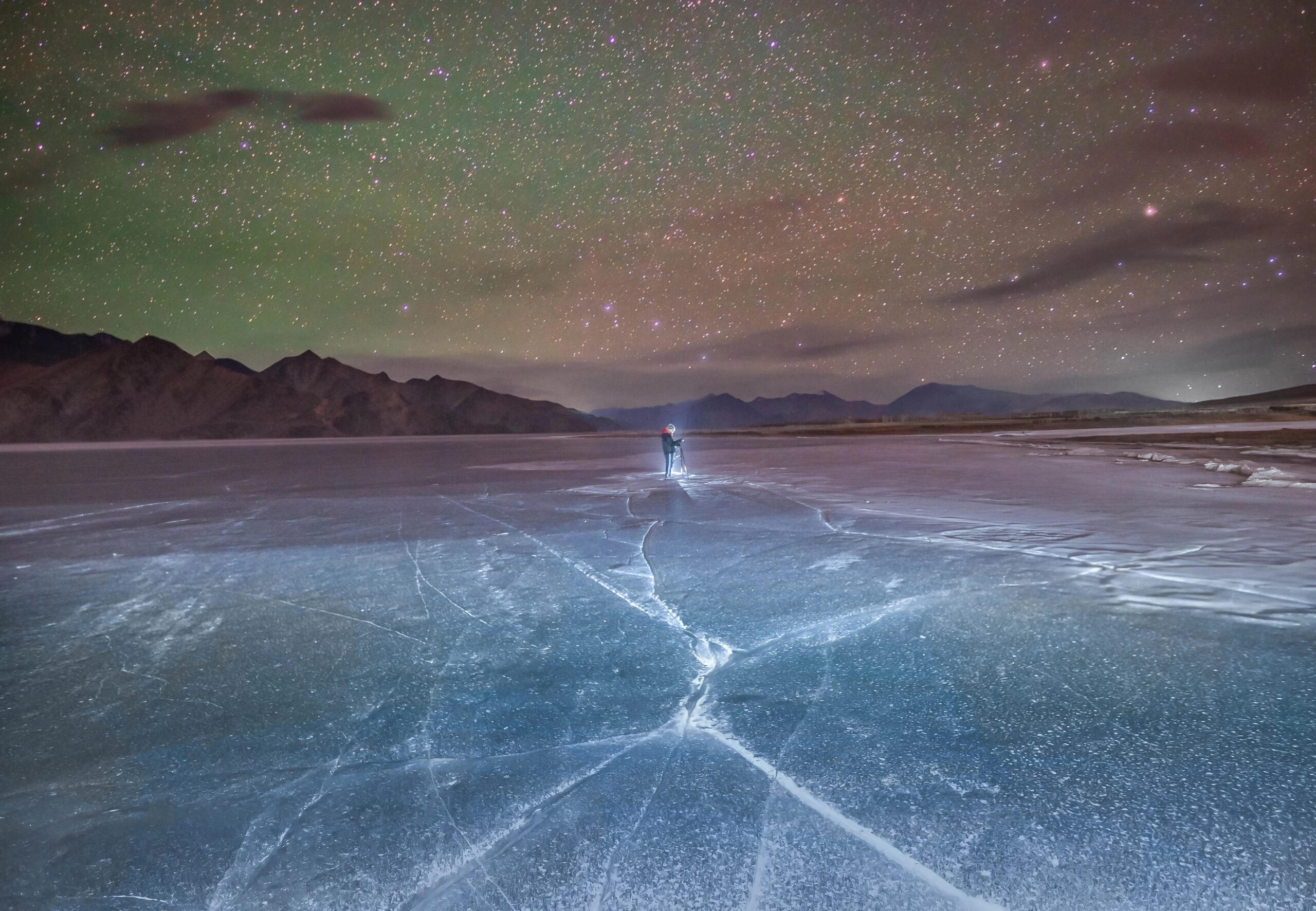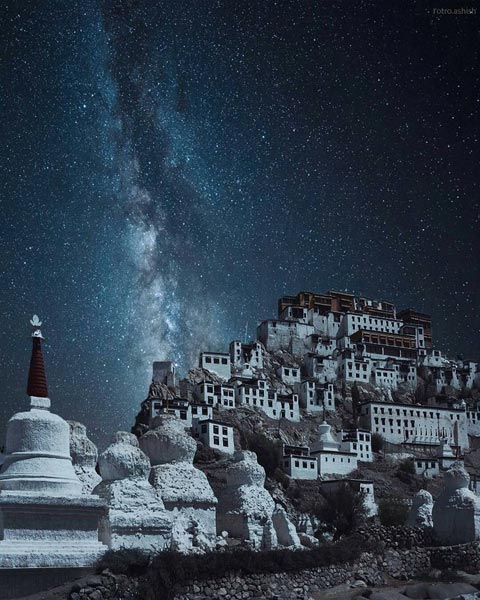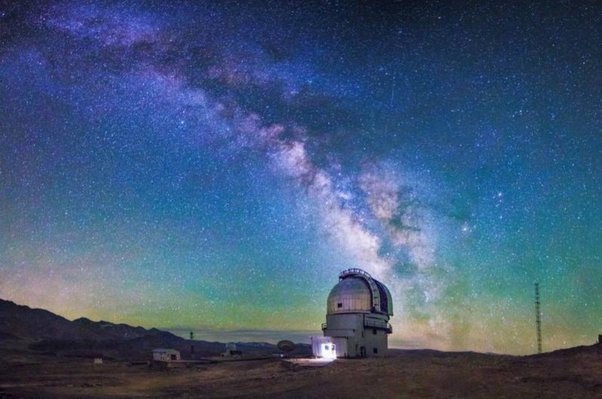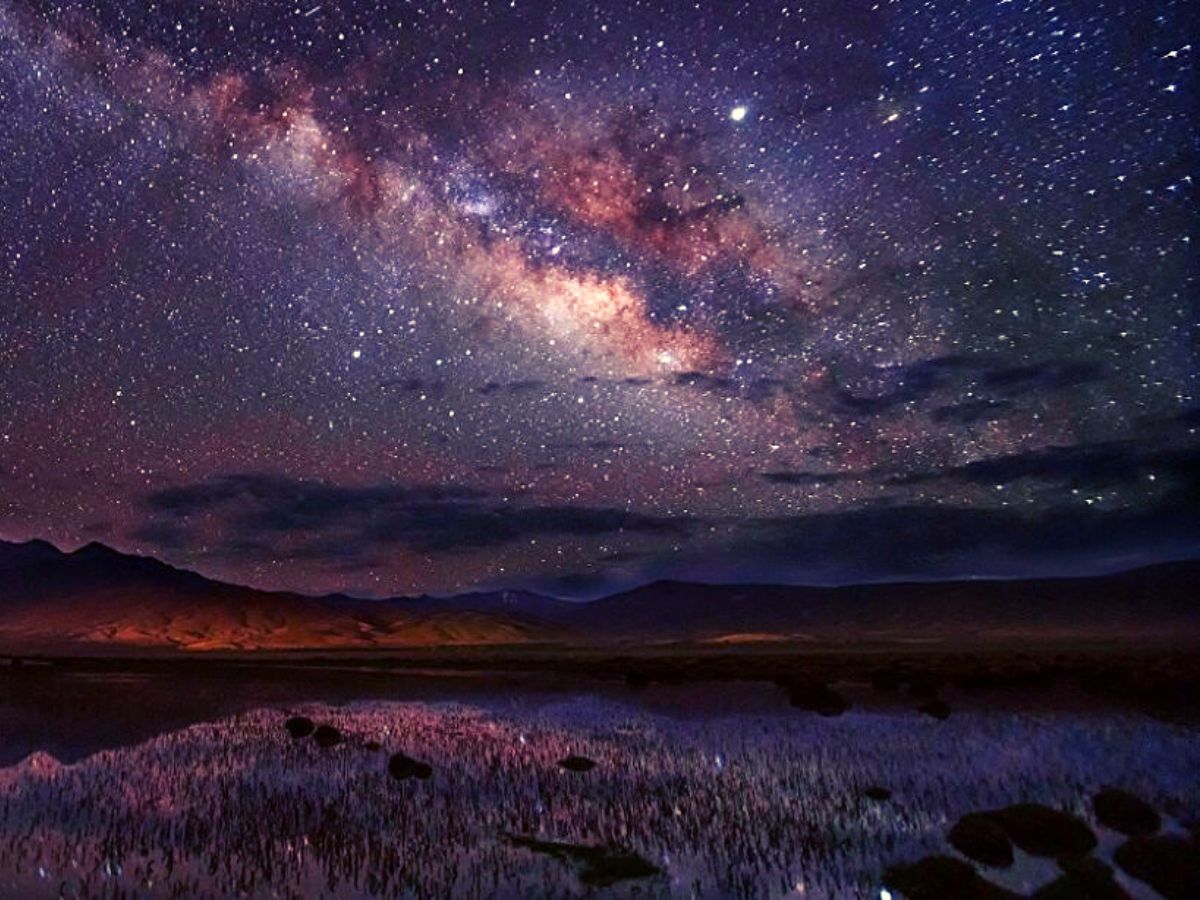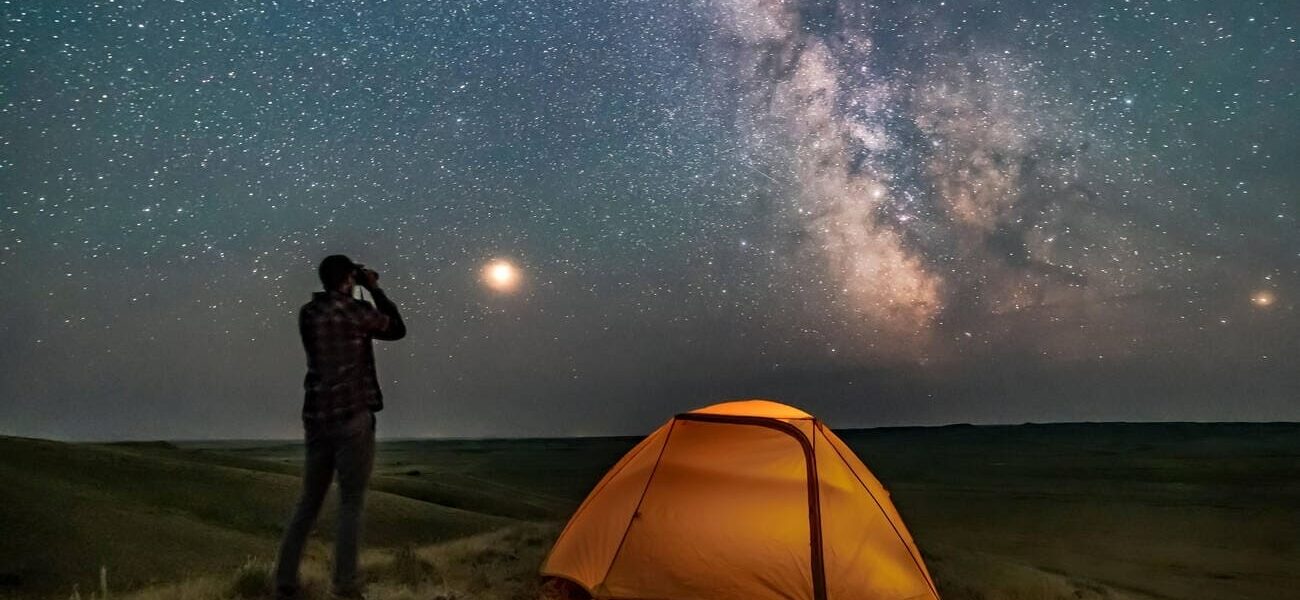Exploring the Himalayas at night under a full moon is a mesmerizing experience that draws adventurers from all over the world. Ladakh, known for its high-altitude desert landscapes, starry skies, and breathtaking mountain views, offers some of the world’s most enchanting Ladakh night hikes. On these moonlit treks, trekkers are surrounded by towering Himalayan peaks, clear skies for astrophotography, and a mystical atmosphere that makes Ladakh’s full moon treks an unforgettable adventure.
In this guide, we’ll explore everything you need to know to plan your own night hike in Ladakh, from the best trekking spots to essential preparation tips.
Why Choose Night Hikes in Ladakh?
The Unique Experience of Moonlit Treks in the Himalayas
Trekking at night under a full moon is an adventure like no other. As the sun sets, the landscapes transform, illuminated by the soft glow of the moon. In Ladakh, with its clear night skies and absence of light pollution, the stars are especially bright, creating a magical setting for night hikes. Trekkers often describe these moonlit hikes as a deeply spiritual experience that connects them with the natural world.

“Nothing compares to trekking under Ladakh’s starlit skies. The landscape felt surreal, almost like a dream.”
— Anna K., Photographer, Germany
Benefits of Full Moon Treks in Ladakh
- Enhanced Visibility: The full moon provides enough light to hike without artificial sources, casting a natural glow on the terrain.
- Cooler Temperatures: Ladakh can be hot during the day, even at high altitudes. Night hikes allow trekkers to enjoy cooler, more comfortable temperatures.
- Spiritual Connection: Many travelers find trekking under a full moon a calming and spiritual experience, especially in a place as sacred as Ladakh.
“I felt an incredible peace walking under the full moon. It was a perfect balance of adventure and tranquility.”
— Ravi P., Teacher, India
The Magic of Full Moon Treks in the Himalayas
Spiritual and Mystical Aspects of Moonlit Treks
Ladakh, steeped in Tibetan Buddhist culture, has long considered the moon a symbol of clarity and calm. Many locals view the full moon as a time of introspection and reverence. Trekking during this phase allows hikers to embrace this spiritual atmosphere, adding depth to their journey.
“The silence, the light from the moon, and the snow-capped peaks made this trek unforgettable. It was an almost spiritual experience for me.”
— Luis R., Engineer, Spain
Best Locations for Night Hikes in Ladakh
Ladakh is full of stunning locations that transform under the full moon’s glow. Here are some of the best spots to experience night hikes in this magical region.

Nubra Valley – Moonlit Sand Dunes and Starry Nights
Nubra Valley, with its unique high-altitude desert, offers one of the most surreal landscapes for night hiking. Here, moonlight casts shadows over the sand dunes, while the lack of light pollution makes stargazing a breathtaking experience. The valley’s soft, rolling sands reflect the moonlight, creating a beautiful and unique landscape.
“Hiking in Nubra Valley under a full moon felt like stepping into another world. The stars were so clear!”
— Emilia T., Travel Blogger, Italy
Pangong Lake – Reflecting the Stars
Located at a high altitude, Pangong Lake is famous for its crystal-clear reflections of the sky. This lake is a favorite spot for astrophotography enthusiasts, as its surface mirrors the stars and moonlight beautifully. The combination of clear skies, high altitude, and reflective water creates ideal conditions for night sky photography.
“Pangong Lake was stunning. I’ve never seen stars like that! It’s a photographer’s dream.”
— Michael L., Photographer, USA
Tso Moriri – Remote and Scenic
For those seeking a quieter, more secluded night hiking experience, Tso Moriri is a hidden gem. Far from populated areas, this high-altitude lake offers an untouched landscape ideal for a full moon trek. Tso Moriri’s remote location means no light pollution, making it an excellent spot for stargazing.
“The silence around Tso Moriri was almost humbling. Just me, the mountains, and the stars.”
— Amina H., Journalist, UAE
Planning Your Full Moon Trek in Ladakh
When to Go: Best Times of Year for Full Moon Hikes
Ladakh’s trekking season generally runs from May to October when the weather is most stable. However, each season brings its own charm:
| Month |
Weather |
Night Hiking Experience |
| May – June |
Cool nights, clear skies |
Ideal for early-season treks, milder temperatures. |
| July – August |
Warmer nights, occasional rain |
Popular season; great for lake reflections. |
| September – October |
Cooler nights, clearer skies |
Best for bright, crisp views of the night sky. |
The full moon happens once a month, so plan your visit accordingly to make the most of this lunar trekking experience.

How to Prepare for High-Altitude Night Hikes
Trekking in Ladakh means dealing with high altitudes. Here are some essential tips:
- Acclimate: Arrive in Leh a few days before your trek to acclimatize to the altitude.
- Hydrate: The high-altitude air is dry, so drink plenty of water to stay hydrated.
- Pace Yourself: Night hikes are best enjoyed slowly. Taking your time also helps prevent altitude sickness.
Essential Gear for Moonlit Treks in Ladakh
Here’s a list of essential items for your full moon trek:
- Headlamp: Although the full moon provides light, a headlamp with a red-light option is helpful.
- Warm Layers: Temperatures can drop sharply at night, so dress in layers.
- Trekking Poles: These will help with stability on uneven terrain.
- Wide-Angle Camera Lens: Essential for capturing the vast, starry night skies.
Tips for Safe and Enjoyable Night Hikes
Safety Tips for Night Treks in Ladakh’s Remote Areas
Safety should always come first, especially at night:
- Stick with a Guide: A local guide knows the terrain and weather conditions, providing extra security.
- Stay in a Group: There’s safety in numbers, so consider traveling with a small group.
- Be Prepared for Emergencies: Carry a basic first-aid kit and emergency supplies.
“Our guide made us feel safe and shared fascinating stories about Ladakh’s history.”
— Nora S., Archaeologist, Canada
Weather Considerations for Night Treks in the Himalayas
Ladakh’s weather can be unpredictable, especially at high altitudes. Check the forecast before setting out, and be prepared for temperature drops. Clear skies are essential for stargazing, but bring a warm jacket to guard against sudden cold spells.

Responsible and Eco-Friendly Trekking Practices
Ladakh’s pristine landscapes deserve respect and care. Follow leave-no-trace principles:
- Take All Trash with You: Carry a small bag to collect any waste.
- Respect Local Customs: Be mindful of local religious and cultural practices.
- Limit Campfire Use: Avoid making fires to protect the environment.
Top Astrophotography Spots on Ladakh’s Night Hikes
Best Night Sky Photography Tips for Himalayan Treks
Capturing Ladakh’s night sky requires the right approach:
- Use Long Exposure: Set your camera to a long exposure to capture as much light as possible.
- Adjust ISO: A higher ISO will bring out the stars, but don’t go too high to avoid noise.
- Bring a Tripod: Keeping your camera stable is crucial for clear shots.
Capturing Ladakh’s Starry Night Landscapes
Ladakh’s unique terrain offers excellent opportunities for photographers. Locations like Pangong Lake and Nubra Valley have wide-open skies, making it easy to frame the Milky Way or moonlight over the landscape.
Choosing the Right Guide or Tour for Night Hiking
Benefits of Hiring a Local Guide for Night Treks
Local guides are invaluable for their knowledge of the area and Ladakh’s cultural insights. Guides can navigate safely in the dark and share fascinating stories about the region.
“Our guide’s insights about the stars and local legends made the hike more meaningful.”
— Oliver M., Historian, UK
Selecting Responsible Trekking Companies in Ladakh
Look for ethical trekking companies that support sustainable tourism and prioritize environmental conservation. Responsible companies often partner with locals and help visitors leave a positive impact.

FAQs about Night Hikes in Ladakh
What’s the Best Time of Year for Night Hikes in Ladakh?
May to October offers the clearest skies and most stable weather for night hiking. Full moon nights are ideal for visibility.
Are Night Treks Safe in High-Altitude Areas Like Ladakh?
With the right preparation, acclimatization, and a guide, night hikes can be safe and highly enjoyable.
Do I Need Special Gear for Full Moon Treks?
Yes, pack warm clothing, a headlamp, trekking poles, and a camera for night sky photography.
How Can I Capture the Best Photos of the Night Sky?
Bring a tripod, use long exposures, and experiment with ISO settings for clear, starry photos.
How Can I Respect Local Culture on Ladakh’s Trails?
Respect religious sites, follow eco-friendly practices, and engage with locals respectfully.
Ladakh night hikes
Ladakh night hikes | The journey through Ladakh mirrors the very essence of unraveling unknown horizons, as its dramatic landscapes and unique cultural identity awaken the deepest sense of wonder and exploration. Ladakh night hikes delves into this realm where inner peace intertwines with the wild, untouched beauty of Ladakh. From the snow-capped peaks to the serene monasteries, every step in Ladakh is a step toward self-discovery. The mountains, ancient paths, and unspoken mysteries stretch before travelers, offering a meditative experience where each encounter feels both effortless and transformative. Whether it’s trekking across remote valleys or sitting quietly beside a sacred lake, Ladakh invites those who seek a deeper connection to the natural and spiritual world.

Ladakh night hikes
The monasteries of Ladakh stand as living monuments to the region’s profound spiritual heritage. With origins dating back over a thousand years, these ancient structures are both places of worship and repositories of art, culture, and wisdom. Hemis Monastery, one of the largest in Ladakh, is renowned for its annual festival, featuring colorful mask dances performed by monks. The history of these monasteries reflects Ladakh’s role as a crossroads between India, Tibet, and Central Asia, where religious and cultural influences have intertwined over the centuries.
The Tibetan Buddhist influence is especially evident in the architecture and daily life of the monks. Prayer wheels, intricate murals, and the soft hum of chants fill the air as visitors explore the monastery grounds. Each monastery, from the remote Lamayuru to the awe-inspiring Thiksey, offers a window into the spiritual heart of Ladakh. These centers of meditation, learning, and community life continue to thrive, preserving traditions that have shaped Ladakh for generations.
Why Visit Ladakh for Ladakh night hikes?
Ladakh is a destination that transcends mere travel. It offers a journey that touches both the outer and inner landscapes, making it a perfect setting for those who seek to unravel their own unknown horizons. The region’s breathtaking scenery—from towering mountain ranges to hidden valleys—provides not just an escape but a space for contemplation and growth. Ladakh’s culture, deeply rooted in Buddhist practices, invites visitors to reflect on their own lives and the world around them.
Ladakh’s people, known for their warmth and hospitality, add to the richness of the experience. Villages like Sumda Chun and the legendary Nubra Valley introduce travelers to a way of life that is intricately connected to nature and spirituality. Staying in local homestays allows for immersive experiences where one can learn about traditional Ladakhi customs, share meals made from local produce, and participate in community rituals.

Beyond its natural beauty, Ladakh offers a unique opportunity to explore oneself. The vastness of the region’s plateaus and the clarity of its skies seem to mirror the vastness of the human spirit. Whether it’s standing atop a mountain pass at 18,000 feet or meditating in a centuries-old monastery, Ladakh helps unravel the unknown horizons within each traveler.
Finding the Best Ladakh night hikes in Ladakh
Finding the best places in Ladakh to experience “Ladakh night hikes” involves venturing off the beaten path. Ladakh’s lesser-known treks, such as those leading to secluded monasteries or high-altitude lakes, offer unparalleled opportunities for solitude and reflection. The Markha Valley trek, for instance, takes travelers through verdant valleys, ancient villages, and high-altitude passes, allowing for both physical and spiritual exploration.
Ladakh’s iconic lakes, including Pangong Tso and Tso Moriri, are ideal spots for quiet contemplation. Their still waters reflect the sky, creating a mesmerizing landscape that feels timeless and infinite. Sitting beside these lakes, especially at dawn or dusk, brings an overwhelming sense of peace and connection with nature.

For those interested in Ladakh’s spiritual heritage, exploring monasteries such as Alchi, Phyang, or Diskit can be a transformative experience. These sites are not just places of worship but also centers of art, philosophy, and wisdom. Visiting these monasteries, with their ancient murals and intricate statues, offers insight into Ladakh’s rich cultural tapestry.
Ladakh’s Atmosphere and Ladakh night hikes
Ladakh’s atmosphere is unlike any other place on Earth. The stark contrasts between the rugged mountains and the serene, tranquil monasteries create an environment that feels both raw and sacred. The traditional decor in Ladakhi homes and religious sites reflects this balance, with mud-brick houses adorned with prayer flags and colorful thangkas (Buddhist paintings) that add warmth and spiritual meaning to the space.

The interiors of Ladakhi homes, often simple and functional, are filled with symbols of devotion. Small shrines dedicated to Buddhist deities are common, and the air is often fragrant with incense. The use of earthy materials, like stone and wood, along with brightly colored textiles, creates an inviting and peaceful space, perfect for relaxation and reflection.
Traditional Ladakhi Cuisine
Traditional Ladakhi cuisine is an integral part of the region’s identity, offering a unique blend of flavors that reflect its harsh climate and remote location. Hearty, warming dishes such as thukpa (noodle soup) and momos (dumplings) provide the sustenance needed to endure Ladakh’s cold temperatures. Skyu, a thick stew made with root vegetables and barley, is another staple of the Ladakhi diet, designed to nourish both body and spirit.

Drinks like butter tea, made with yak butter and salt, are a must-try for anyone visiting Ladakh. This rich, savory drink is not only warming but also hydrating, making it essential for those venturing into the high-altitude regions of Ladakh. Chang, a local barley beer, is often enjoyed during festivals and community gatherings, adding a sense of joy and camaraderie to any occasion.
Live Cultural Ladakh night hikes in Ladakh
Ladakh is home to a vibrant cultural scene, with festivals and live performances held throughout the year. The Hemis Festival, which celebrates the birth of Guru Padmasambhava, is one of the largest and most famous events in the region. Monks dressed in elaborate costumes perform cham dances, which depict the triumph of good over evil. The energy of the festival, with its bright colors, rhythmic music, and elaborate rituals, draws visitors from around the world.
Other local festivals, such as the Losar (New Year) and Ladakh Festival, provide visitors with the chance to witness traditional dance, music, and crafts that have been passed down through generations. These events are more than just entertainment; they are a celebration of Ladakh’s rich cultural heritage and its deep connection to the spiritual world.
Trekking and Outdoor Activities Ladakh night hikes
Ladakh is a trekker’s paradise, offering some of the most stunning and challenging routes in the world. From the famous Ladakh night hikes, which follows the frozen Zanskar River, to lesser-known routes like the Sham Valley or Nubra Valley treks, Ladakh’s landscape offers endless possibilities for adventure and discovery. The high-altitude passes, such as Khardung La and Chang La, offer breathtaking views of snow-capped peaks and sprawling valleys.

Wildlife enthusiasts will also find Ladakh night hikes to be a haven for rare species such as the snow leopard, Himalayan blue sheep, and the Tibetan wild ass. Winter expeditions to spot the elusive snow leopard in the Hemis National Park are gaining popularity among wildlife photographers and conservationists alike.
The Importance of Preserving Ladakh’s Ladakh night hikes
Ladakh’s rich cultural and environmental Ladakh night hikes is under increasing threat from climate change and mass tourism. Preserving this unique region requires careful attention to sustainable tourism practices. Choosing eco-friendly accommodations, supporting local businesses, and participating in community-led conservation efforts are just a few ways that visitors can contribute to the preservation of Ladakh’s natural and cultural heritage.
Ladakh’s people have a long history of living in harmony with their environment, practicing sustainable agriculture, and maintaining a deep spiritual connection to the land. Visitors are encouraged to follow the same principles, leaving no trace and respecting the fragile ecosystems that make Ladakh so special.
Etiquette and Tips for Visiting Ladakh night hikes
Before visiting Ladakh, it’s essential to understand and respect the region’s customs and traditions. As a deeply spiritual place, Ladakh requires visitors to dress modestly, especially when visiting monasteries or attending religious ceremonies. Always ask for permission before taking photographs inside monasteries or of local people.
Medical Ladakh night hikes
Spa trail Ladakh night hikes
Ladakh night hikes

When Ladakh night hikes, remember to stay on designated paths to avoid damaging fragile ecosystems. Tipping is appreciated but not expected in most settings, and it’s important to carry cash, as many remote areas do not accept credit cards. Lastly, be mindful of altitude sickness and take the necessary precautions when traveling to higher elevations.
Conclusion: Enjoying Ladakh night hikes in Ladakh
Ladakh is a place where the physical and spiritual worlds converge, offering travelers a journey unlike any other. Whether you’re trekking across high-altitude deserts, exploring ancient monasteries, or simply sitting in quiet reflection by a mountain lake, Ladakh invites you to unravel your own unknown horizons. By respecting the region’s traditions and practicing sustainable tourism, you help ensure that Ladakh’s beauty and cultural richness will be preserved for future generations to explore and enjoy.
